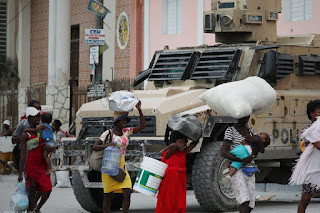Write 48 Rightsworkers Tragedy Deepens: Second Body Recovered from Assam’s Flooded Coal Mine
The grim search for survivors in Assam’s flood-ravaged coal mine continues as rescue teams recovered a second body on Sunday, marking the seventh day of relentless efforts. Identified as Lijen Magar, a 27-year-old from Kalamati village, the discovery adds to the growing toll of this catastrophic incident. The tragedy, which unfolded last Monday in the Dima Hasao district, has cast a long shadow over the community, leaving families and authorities grappling with grief and uncertainty. The retrieval of Magar’s body underscores the perilous conditions rescue teams face as they navigate the flooded quarry, with hopes of finding the remaining trapped workers dwindling.
The incident occurred when nine workers became trapped 340 feet underground in an Umrangsu mine following a sudden water spurt. Despite the harsh conditions, rescue teams have been working tirelessly, employing advanced equipment and expertise provided by ONGC and Coal India. The first body, identified as a Nepalese laborer, was found on Wednesday, offering a glimmer of closure to one grieving family. Assam’s Chief Minister, Himanta Biswa Sarma, expressed his condolences to the bereaved families via social media, acknowledging the pain and loss endured by the community. His message highlighted the state’s commitment to continuing rescue operations until every trapped miner is accounted for.
Dewatering efforts have been at the forefront of the rescue mission, with specialized machinery deployed to drain the flooded mine. However, the process is painstakingly slow, hindered by the depth of the water and the structural instability of the mine. Rescue teams face numerous challenges, from navigating submerged tunnels to ensuring their safety in the precarious environment. The combined expertise of ONGC and Coal India has been instrumental in advancing the operation, but the scale of the disaster has made it one of the most complex rescue missions in the region’s history.
As the days stretch on, the families of the trapped workers remain in a state of limbo, oscillating between hope and despair. Many have gathered near the mine site, praying for a miracle and clinging to the possibility of their loved ones’ survival. The emotional toll on the community is palpable, with each passing day intensifying the weight of uncertainty. Local leaders and volunteers have stepped in to provide support, but the sheer magnitude of the tragedy has left an indelible mark on the region.
The Assam coal mine disaster has also reignited discussions about worker safety and the need for stringent regulations in hazardous industries. Advocates are calling for comprehensive safety protocols and improved monitoring mechanisms to prevent such tragedies in the future. The incident serves as a stark reminder of the risks faced by workers in the mining sector, often exacerbated by inadequate safety measures and emergency preparedness. As rescue operations continue, the focus remains on recovery, but the broader implications of the tragedy cannot be ignored.
In the coming days, the priority will be to locate the remaining trapped workers and provide closure to their families. The resilience and dedication of the rescue teams offer a glimmer of hope amidst the darkness, but the road ahead is fraught with challenges. As Assam mourns the loss of its workers, the tragedy serves as a somber testament to the human cost of industrial accidents and the urgent need for systemic change.
The incident occurred when nine workers became trapped 340 feet underground in an Umrangsu mine following a sudden water spurt. Despite the harsh conditions, rescue teams have been working tirelessly, employing advanced equipment and expertise provided by ONGC and Coal India. The first body, identified as a Nepalese laborer, was found on Wednesday, offering a glimmer of closure to one grieving family. Assam’s Chief Minister, Himanta Biswa Sarma, expressed his condolences to the bereaved families via social media, acknowledging the pain and loss endured by the community. His message highlighted the state’s commitment to continuing rescue operations until every trapped miner is accounted for.
Dewatering efforts have been at the forefront of the rescue mission, with specialized machinery deployed to drain the flooded mine. However, the process is painstakingly slow, hindered by the depth of the water and the structural instability of the mine. Rescue teams face numerous challenges, from navigating submerged tunnels to ensuring their safety in the precarious environment. The combined expertise of ONGC and Coal India has been instrumental in advancing the operation, but the scale of the disaster has made it one of the most complex rescue missions in the region’s history.
As the days stretch on, the families of the trapped workers remain in a state of limbo, oscillating between hope and despair. Many have gathered near the mine site, praying for a miracle and clinging to the possibility of their loved ones’ survival. The emotional toll on the community is palpable, with each passing day intensifying the weight of uncertainty. Local leaders and volunteers have stepped in to provide support, but the sheer magnitude of the tragedy has left an indelible mark on the region.
The Assam coal mine disaster has also reignited discussions about worker safety and the need for stringent regulations in hazardous industries. Advocates are calling for comprehensive safety protocols and improved monitoring mechanisms to prevent such tragedies in the future. The incident serves as a stark reminder of the risks faced by workers in the mining sector, often exacerbated by inadequate safety measures and emergency preparedness. As rescue operations continue, the focus remains on recovery, but the broader implications of the tragedy cannot be ignored.
In the coming days, the priority will be to locate the remaining trapped workers and provide closure to their families. The resilience and dedication of the rescue teams offer a glimmer of hope amidst the darkness, but the road ahead is fraught with challenges. As Assam mourns the loss of its workers, the tragedy serves as a somber testament to the human cost of industrial accidents and the urgent need for systemic change.



Comments
Post a Comment